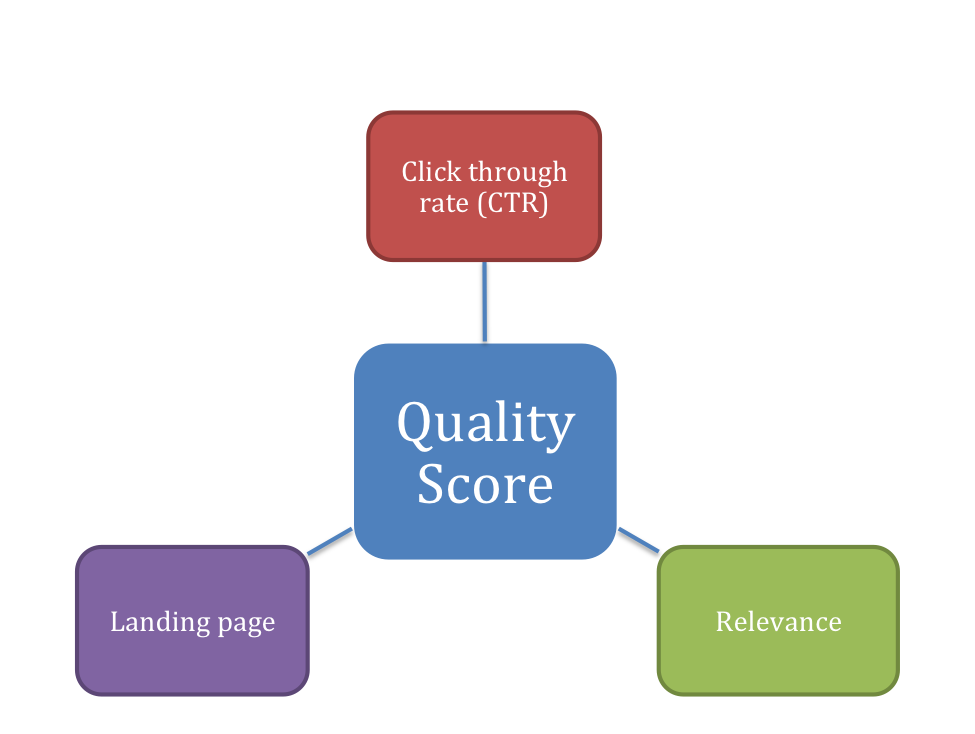When I first introduce myself to a new acquaintance the topic will naturally go into the direction of ‘what do you do for a living?’ Naturally, my answer is online marketing. The subsequent conversation will typically move towards this scenario:
The new acquaintance will start telling me how badly her company is doing their online marketing. She will start complaining about how expensive or difficult it is to acquire customers online and how ineffective the method is. When this happens, the conversation usually ends with this question ‘so what creative ideas do you have in online marketing?’ When the conversation reaches this point, I often feel obliged but happy to share. I’d like to use this opportunity to validate my new ideas with other people. Sometimes I have Barney Stinson in my head saying ‘challenge accepted’!

What if I tell you that there is a way to stretch your marketing budget by 300%?
Some of you may already know that there is such a thing called Quality Score in Google Adwords’ glossary. For the benefit of those who don’t, Quality Score is Google’s way of balancing the interests of all parties in the online advertising ecosystem. The ecosystem includes:
- The search users - give them what they want the first time when they search
- The publishers (Google) – helping them to maximize earnings
- The advertisers (you) – drive traffic to your website with maximum ROI
Quality Score affects your Google Ads position as well as the cost you pay to be in top position. You may think that it’s something that you need to pay attention to. But, as your workday passes by, more urgent items fall into your plate and you put your curiosity about Quality Score in the back burner.
Bad idea.
Bear with me for a moment, while I do the math for you.
Let’s assume that there are 2 people competing with you on your Google Ad keywords. All of you set the same maximum cost per click^ (CPC) at $2 and budget of $100.
^Maximum cost per click is the maximum bid that you are willing to pay for a click. It is not the actual CPC that you will be paying. I will illustrate the actual CPC calculation in a while.
| Bidders | Max CPC | Quality Score | Ad Rank* | Ad Position |
|---|---|---|---|---|
| You | $2 | 3 | 6 | 2 |
| Brenda | $2 | 5 | 10 | 1 |
| David | $2 | 1 | 2 | 3 |
| *Ad Rank = Max CPC X Quality Score | ||||
The way Google calculates your actual CPC is:
Your Actual CPC
= Ad Rank of the person below your Ad position / Your Quality Score + $0.01
For example:
Your Actual CPC for Position #2
= David’s Ad Rank / Your Quality Score + $0.01
= 2 / 3 + $0.01
= $0.676
Brenda’s Actual CPC for Position #1
= Your Ad Rank / Brenda’s Quality Score + $0.01
= 6 / 5 + $0.01
= $1.21
You might ask if the top position worth fighting for? According to this study of close to 2 million Google Ads clicks, the average click through rate of the top position is about 7.11%. While the click through rate of position #2 dropped by more than half to an average of 3.01%. So how much will it cost for you to be in the top position?
Let's use the same example above to illustrate this.
If you want Ad Position #1, you will need to have an Ad Rank higher than Brenda’s Ad Rank at 10.
Your CPC to be in Position #1
= Brenda’s Ad Rank / Your Quality Score + $0.01
= 10 / 3 + $0.01
= $ 3.34
Brenda with Quality Score of 5 will only need to bid $1.21 to be in the top position. However, you will need to bid $3.34 with Quality Score of 3 to be in the same position. So with a budget of $100, Brenda can have up to 82 visitors to her website at Position #1 while you can only have up to 29 visitors in the same position.

How can you improve your Quality Score, you may ask?
Quality Score is influenced by 3 factors:

In my next post, I will go in detail on how you can improve your Quality Score.